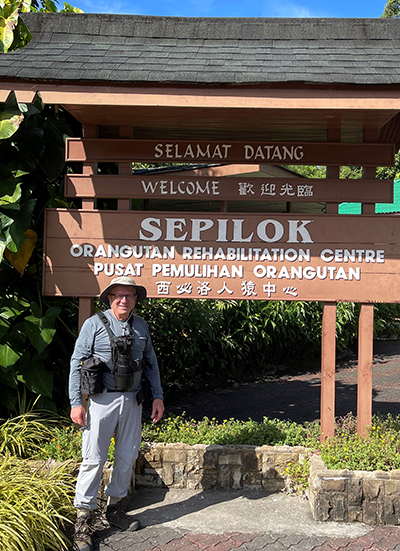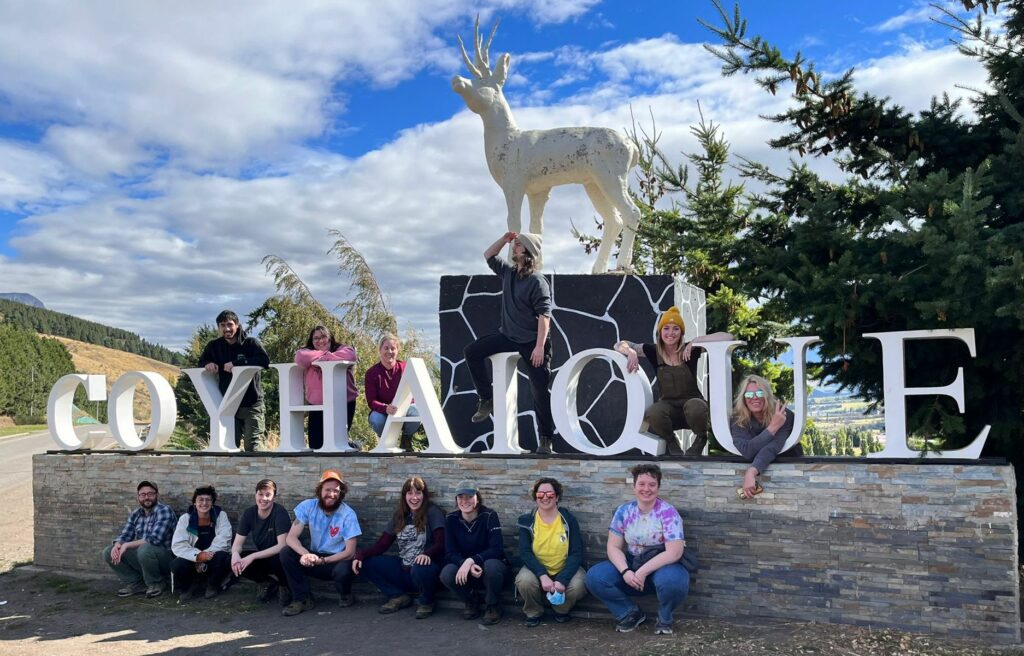On March 6, the College of Forestry is hosting a coffee in honor of International Women’s Day! It will be held in the George Peavy Forest Science Center atrium (3100 SW Jefferson Way, Corvallis, OR 97331).
Speakers
Ashley D’Antonio
Ashley D’Antonio is an Associate Professor of Nature-Based Recreation Management, Gene D. Knudson Forestry Chair, and Associate Department Head in the Department of Forest Ecosystems and Society. She is a recreation ecologist, and her research is very applied. It focuses on helping park and protected area managers understand how to mitigate and manage disturbances from outdoor recreation to meet both visitor use and conservation goals. Dr. D’Antonio teaches undergraduate courses in parks and protected area management, outdoor recreation management, and planning for sustainable recreation. In her free time, she enjoys spending time outside, knitting, and hanging out with her two cats.
Mindy Crandall
Mindy Crandall is a native of Otis, Oregon. She received an associate’s degree from Salish Kootenai College in Pablo, Montana, and a bachelor’s in forest management from Oregon State. She has worked as a dishwasher, hotel housekeeper, GIS technician, prep cook, and advocate at a domestic violence prevention agency. After returning to OSU for a PhD in Applied Economics and Forest Resources in 2014, she was an assistant professor at the University of Maine for 5 years before returning in 2020 for her dream job. Her free time is spent reading, traveling, knitting, feeding pets, and bugging her grown sons to learn to identify trees.
Holly Ober
Holly Ober serves as Associate Dean for Science Outreach & Program Leader for Forestry and Natural Resources Extension (way too many words for a job title!). She earned a BS in biology, MS in wildlife ecology, and dual PhD in forest science/wildlife science. Her passion for research and sunshine led her to a faculty position in Florida with a research component. In this position she found true inspiration in the responsibilities she knew nothing about at the time she applied – Extension. After 14 years as a wildlife Extension Specialist, she was offered an opportunity to transition to Extension Administration, and a few years later this provided the chance to move to her present job at OSU. This career path was shaped by serendipity and a series of inspirational role models.
Tabling Participants
College of Forestry International Programs
In alignment with the College of Forestry’s overarching commitment to diversity, equity and inclusion, the International Programs Office aspires to create a safe, welcoming and supportive environment for OSU students going abroad, international students coming to COF and for our visiting faculty, researchers and partners.
We have about 72% women-identifying participants on our outgoing study abroad programs (above the national average of 67%). In addition, we make sure that our students feel safe and uplifted; many going abroad for the first time. On the itineraries, we prioritize diversity in our guest lecturers and visits so that students are able to see representations of themselves in the real world
As interns, we’ve sent young women to study bioluminescent mushrooms in Brazil, report on fire ecology on the Spanish coast, track primate conservation in Malaysia, and more.

In addition, our office supports many incoming scholars and students, some of whom bring families and the need to integrate into the Corvallis community. We help forge community connections for our college members with organizations like the Corvallis Multicultural Literacy Center and the International Moms Group.
International Moms Group
The mission of the International Moms Group (IMG) is to educate, empower, and encourage international mothers on their parenting journey. It is a group committed to creating a space for belonging, cross-cultural engagement, empowerment, and resource sharing for both OSU-affiliated and community-based international families. IMG provides weekly engagement opportunities for international moms and their children at the Orchard Court Family Housing Community Center. IMG meetings offer space for moms to meet and build friendships, share their cultural traditions, and learn critical information for navigating life with their families here in Oregon.
Featured community partners present on a variety of informational topics, such as “understanding mandatory reporting” (ABC House), “dealing with post-partum depression and pregnancy loss” (Community Doula Project), and “navigating healthcare” (Benton County Health Department).
IMG also offers a variety of activities outside of the weekly meetings such as venturing out into the community on field trips and gathering for potlucks. Additionally, IMG offers two additional cross-cultural, peer-to-peer engagement opportunities: Moms Crossing International Borders, which pairs domestic and international moms for conversation and playdates, and American Thanksgiving, which pairs international and domestic families for a holiday meal. IMG also cultivates leadership pathways for international moms to present at weekly meetings, to do peer outreach, and to serve on the leadership team in charge of planning IMG programming.

Oregon Women in Timber
Oregon Women in Timber was founded in 1978 to support the forest sector through education. Since 1991, OWIT’s pre-K to 8th grade Talk About Trees program—which provides trained facilitators and an age-appropriate, science-based, state-approved curriculum to all Oregon schools, free of charge—has reach nearly 4 million Oregonians. Alongside its ongoing support of TAT, OWIT’s educational advocacy and outreach has evolved along with the make-up of its membership. OWIT members are foresters, mill workers, loggers, teachers, truck drivers, administrative professionals, landowners, and a diverse array of people who value and support science-based forestry education for all Oregonians. From kids in the woods days to career fairs, social media to our Women Who Know the Woods video series, landowner education events to a full-on celebration of October as Forest Products Month, OWIT is proud of its nearly 50 years of being an all-volunteer, statewide non-profit dedicated to “creating awareness and appreciation for the value of trees” and increasing “understanding about the protection, management and conservation of the renewable forest.”
The Paulines (College of Forestry student club)
The Paulines are a club named after Pauline Barto Sandoz, the first woman to graduate from the College of Forestry. We are a club focused on empowering women, womxn, gender minorities, underrepresented demographics, and allies in the College of Forestry and broader Natural Resources fields as students, faculty, or community members associated with Oregon State University.

Women in Forest Management
Women in Forest Management (WIFM) is an organization that exists to empower and connect women and those that support them. This group is for anyone working in all aspects of forest management as well as all forest management objectives. In the future, we will be planning and promoting events that provide professional development, training, networking, and mentoring opportunities for women and their allies in forest management, including an annual conference.
WIFM is not a group exclusively for women. While we focus on promoting networking and development opportunities for women in the profession, we also aim to support and learn from all individuals who champion women in forestry. We believe that each individual’s diverse perspective, shaped by unique experiences, is vital to achieving shared goals and fostering collaboration within the industry.

Women Owning Woodlands Network
The Women Owning Woodlands Network (WOWNet) was founded in 2005 in Oregon to create a space where women woodland owners could connect, learn, and actively participate in forest stewardship. Initially started by a group of women, the network emerged as a response to women’s lack of representation and engagement in traditional forestry spaces.
WOWNet provides workshops, peer learning opportunities, and hands-on training in chainsaw training, forest management, and land stewardship. It also fosters community through events like nature walks, virtual book clubs, and seasonal gatherings. The network aims to empower women by building confidence, promoting leadership, and creating a supportive environment for landowners at all experience levels.
With over 150 newsletter subscribers and growing, WOWNet continues to expand across Oregon, ensuring that more women have access to the knowledge, resources, and community needed to manage their woodlands successfully.





















